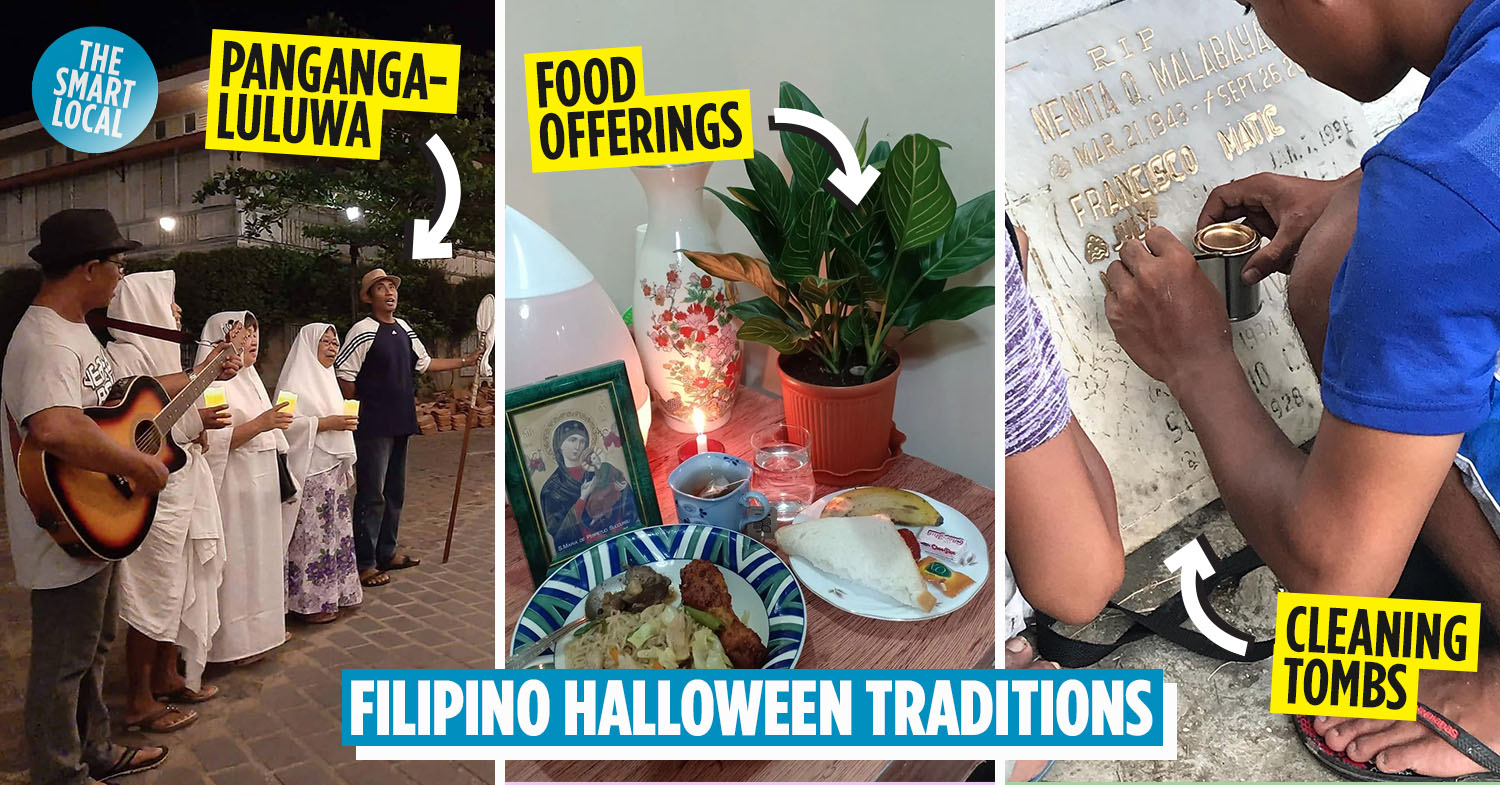Halloween in the Philippines
Halloween or undas may fall within the Philippines’ 4-month long Christmas season but it’s still an event we celebrate with family to honor our departed loved ones. In our country, the holiday isn’t just about scary ghost stories and trying to spook each other, too.
To help you know more about what exactly Filipinos do during Halloween, we’ve prepared a list of Filipino Halloween traditions below. These include the ones we’ve practiced for hundreds of years to more recent conventions.
1. Halloween means time off work
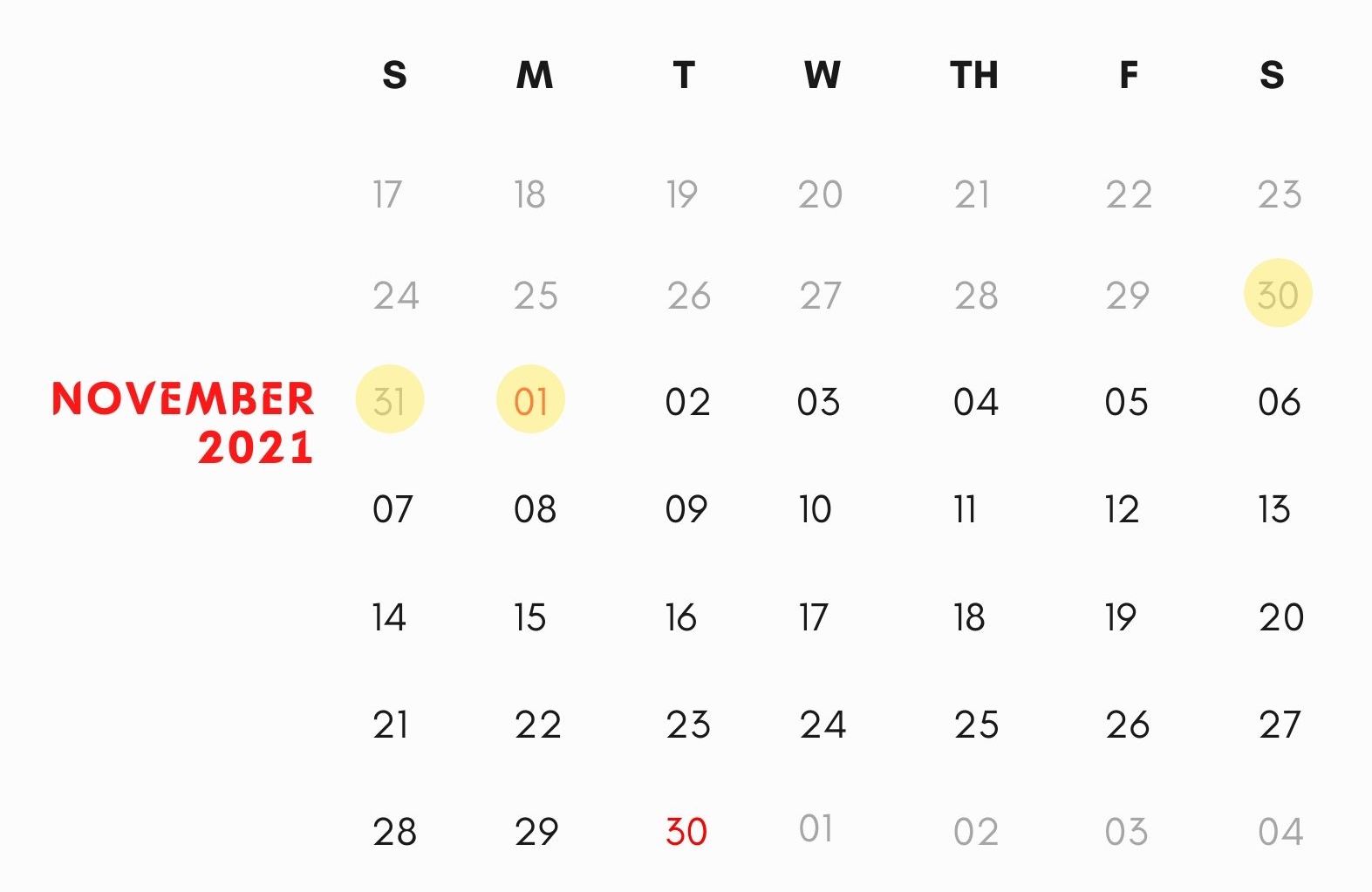
Image credit: The Smart Local Philippines
Since the 1st of November or All Saints’ Day is a special non-working holiday in the Philippines, Filipinos are usually not required to go to work during this day. This also means that school is suspended for students.
When the date falls on a Friday or a Monday, it’s a long weekend that people look forward to months prior to the event. To Filipinos, this holiday makes a great, quick break from work or school which we use to go back to our home provinces or take a vacation.
However, even if it’s not a long weekend, many Filipinos opt to skip work for a couple of days to go back to their hometowns and honor their dead loved ones.
2. Going home to our provinces
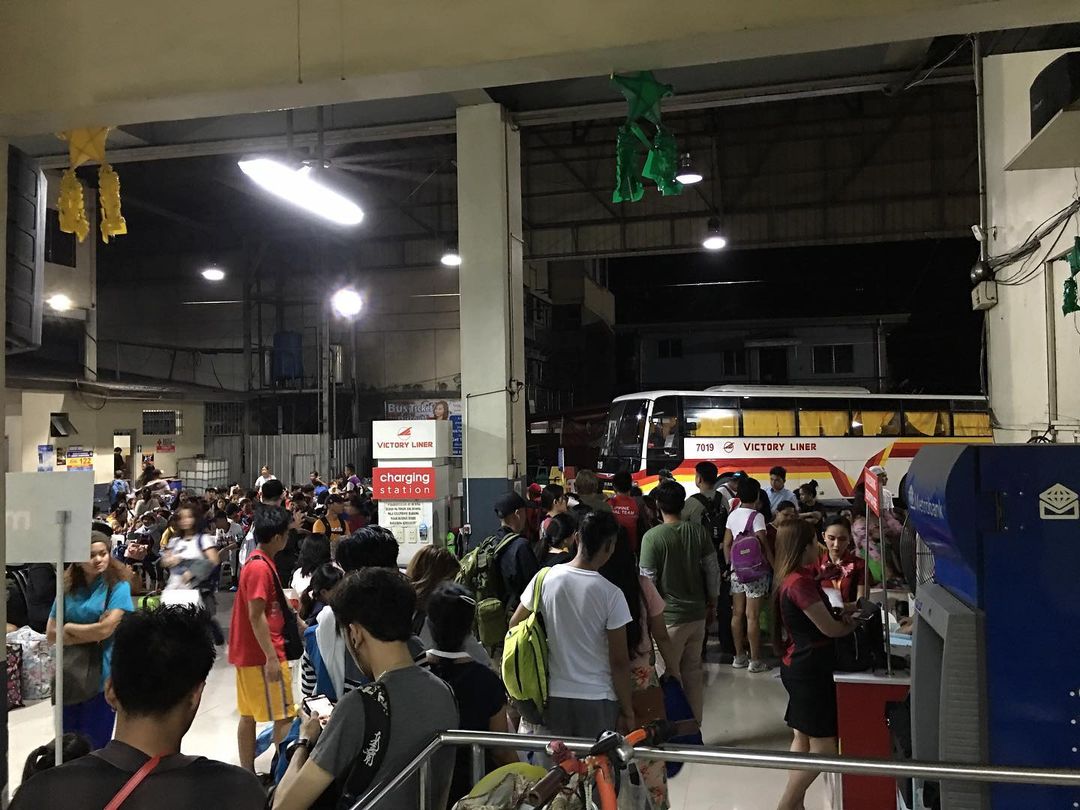
People lining up to get on a bus at the Victory Liner bus terminal in Cubao
Image credit: @ynavictorinasibaen18
Whether or not it’s a long weekend, visiting the dead makes a great reason to make the long trip home to the provinces for Filipinos working in the metro.
Bus terminals and ports are nearly as busy as they are during Christmas during the undas break. Those who don’t own a car usually arrange carpools with friends from the same hometown to steer away from the stress.
As a result, this rush of people going home to their provinces is usually followed by news of traffic at expressways and of bus terminals and ports getting congested.
Nonetheless, many Filipinos still make the sacrifice to be able to visit their dead relatives as well as to meet their living family members.
3. Cleaning tombs or mausoleums
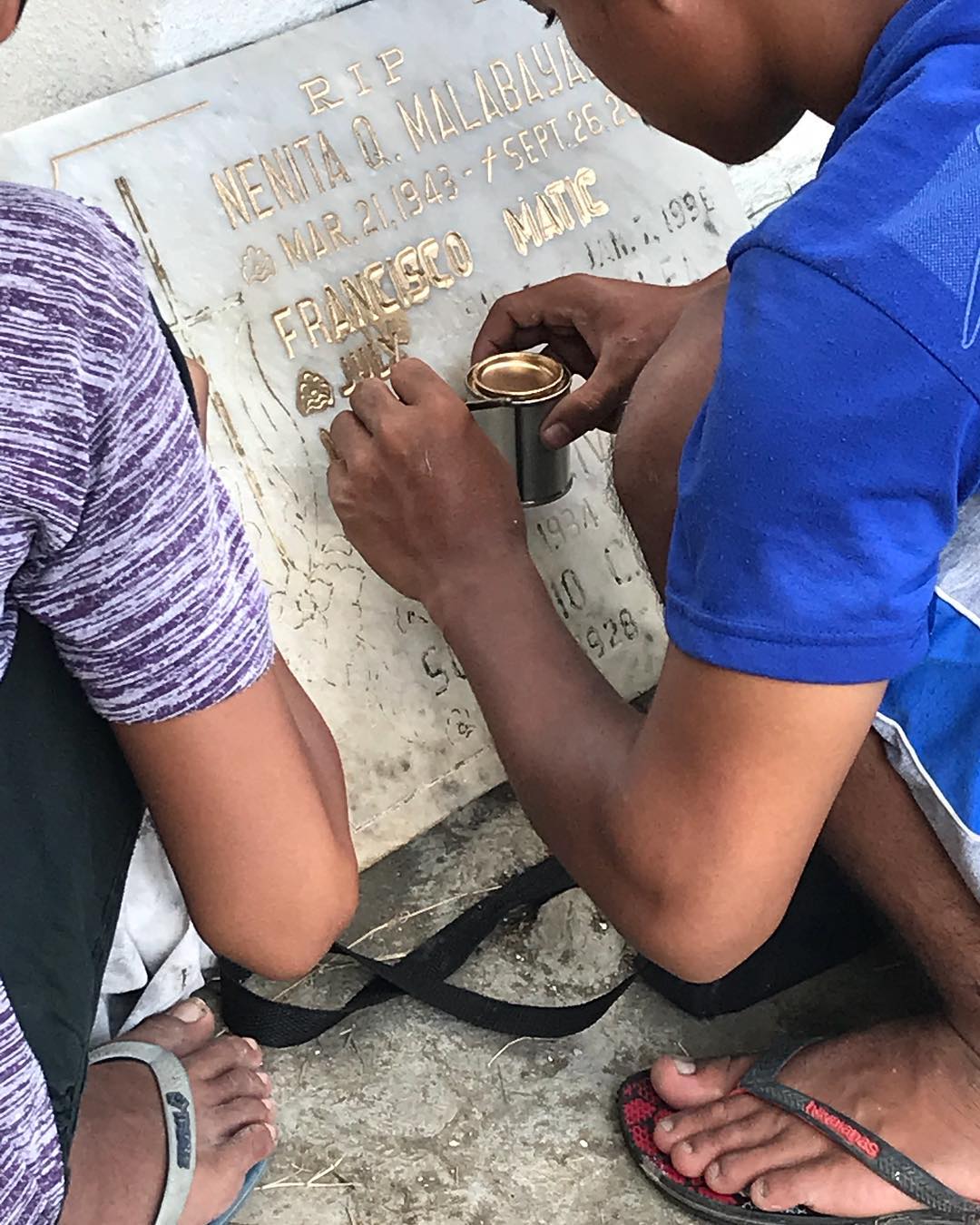
A man repainting a departed family member’s tombstone
Image credit: @imureijo
Filipinos whose departed relatives aren’t buried in private cemeteries that offer tomb cleaning services usually do their own tomb cleaning before Halloween.
A week prior, families typically make a trip to the cemetery, walis (broom) and dustpan in tow. Sometimes, they even bring pots of paint to repaint tombstones or an entire mausoleum – a house-like structure that contains the tombs of their departed family members.
In some public cemeteries in the Philippines, you will also find individuals who offer cleaning services on the days approaching Halloween.
4. Family reunions and camping at the cemetery
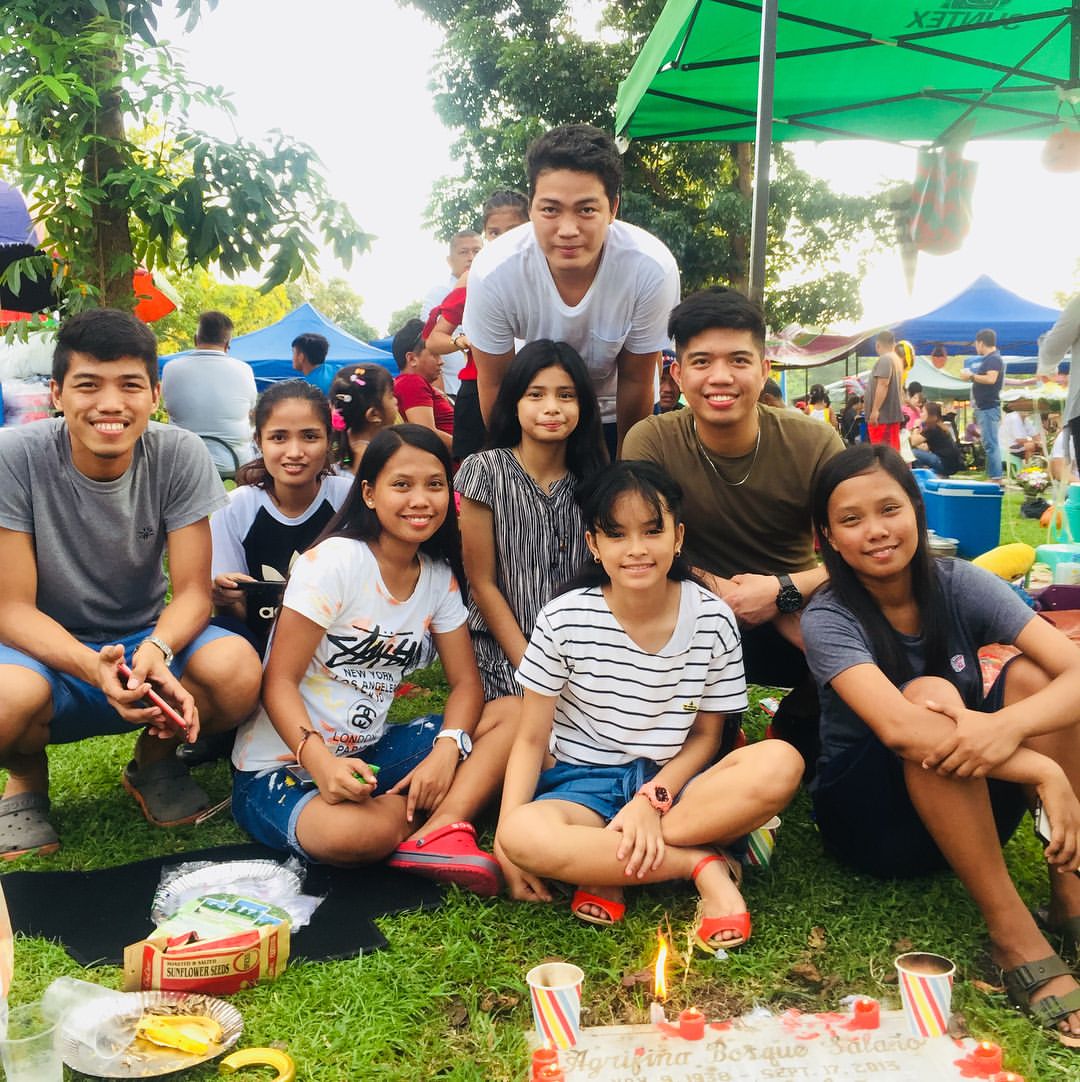
Filipino families usually bring food to eat at the cemetery as they spend time with their departed
Image credit: @michaeljhon1d
It’s become a Halloween tradition for Filipino families to take All Saints’ or All Souls’ Day as an opportunity to have a picnic with our entire extended family at the cemetery. For this, we bring containers of food and rice as well as snacks to last us the entire day.
For those who didn’t come prepared, there are also vendors that sell a variety of food inside and outside the cemetery.
After saying our prayers, we usually spend our time catching up with family members. Some people even set up tents to stay overnight to spend more time with their departed relatives and bond with living relatives for longer.
However, there are also those who aren’t keen on joining the crowd during All Saints’ and All Souls’ Days. These people usually visit on the 31st of October or the 3rd of November, or even a week before or after All Souls’ Day.
5. Preparing food offerings or atang
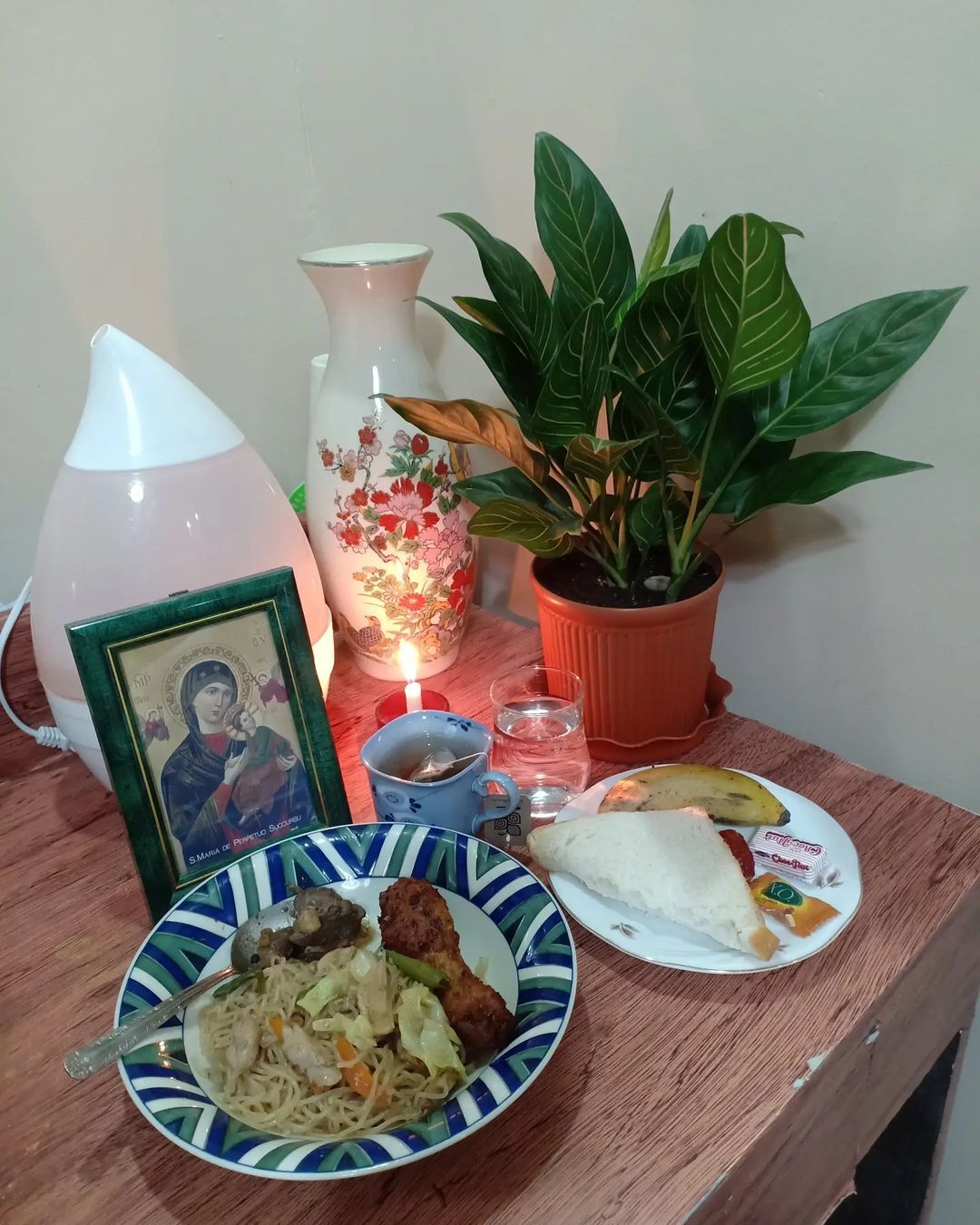
Due to the pandemic, people have also put their food offerings on their altars at home.
Image credit: @evelyn712
Besides flowers and candles, Filipinos also offer food for our dead – such offerings are called atang.
The atang can be a small portion of the food we bring at the cemetery to eat with our living relatives. Sometimes, we’d also bring our departed relatives’ favorite food with the thought that they’d be able to enjoy these, too, in the afterlife.
Some Filipino families also make sure that they have rice cakes for the dead. According to a PhilStar article, glutinous rice used to be harvested before All Souls’ Day before the time of refrigerators which is why rice cakes were served during undas. This Halloween tradition was carried over to this day.
6. Pangangaluluwa – caroling starting on All Hallows’ Eve
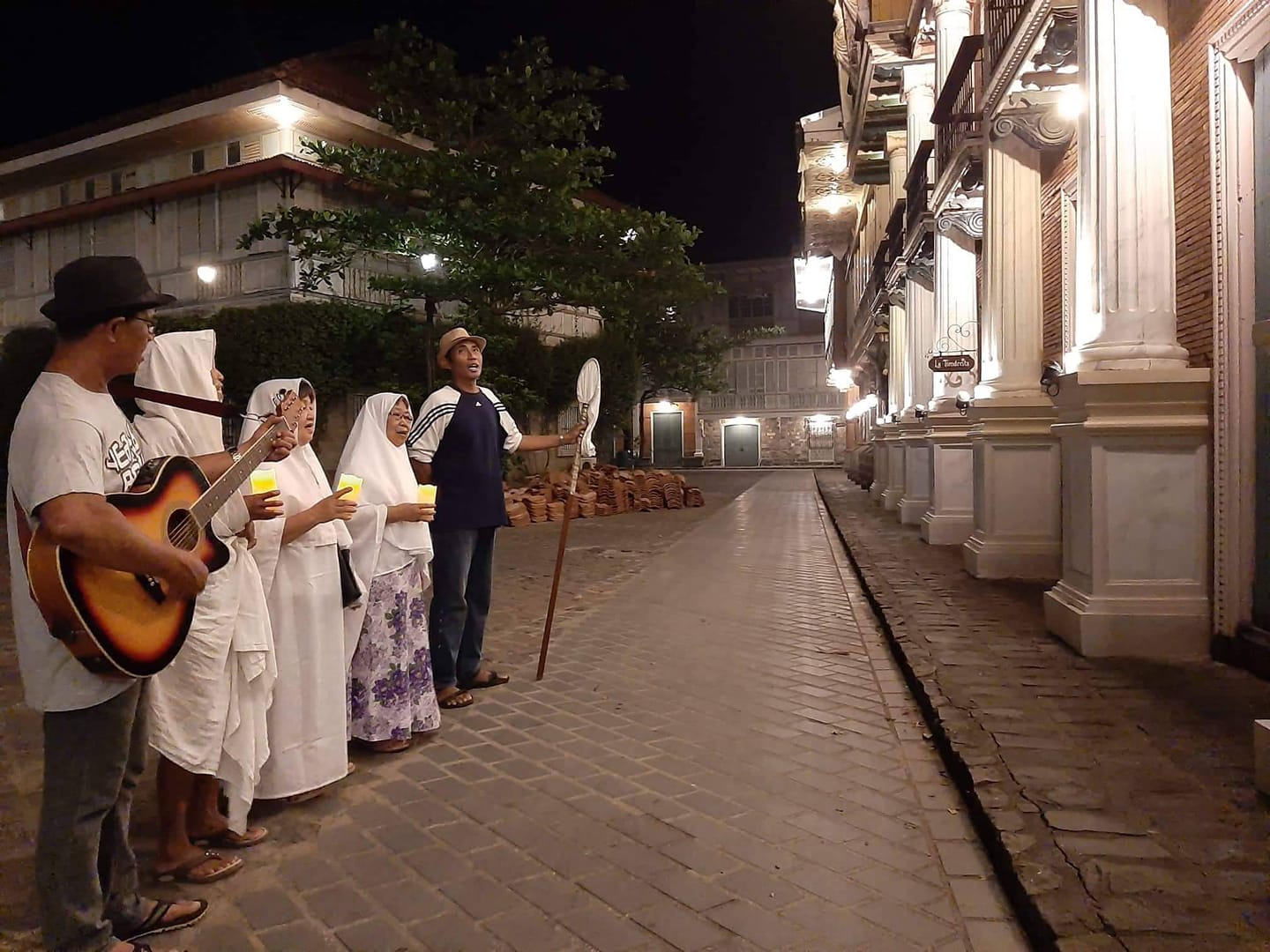
Pangangaluluwa at the heritage destination Las Casas Filipinas de Acuzar
Image credit: Las Casas Filipinas de Acuzar
Pangangaluluwa is a dying Halloween tradition that is still done in a few provinces in the country, such as Cavite and Nueva Ecija.
While it would be the local counterpart of the Western trick-or-treating, it’s also a bit similar to caroling during the Christmas season.
During pangangaluluwa, a group of people draped in white cloth go from house to house pretending to be lost souls, singing in exchange for money or rice cakes which they can bring back to the afterlife.
7. Trick-or-treating
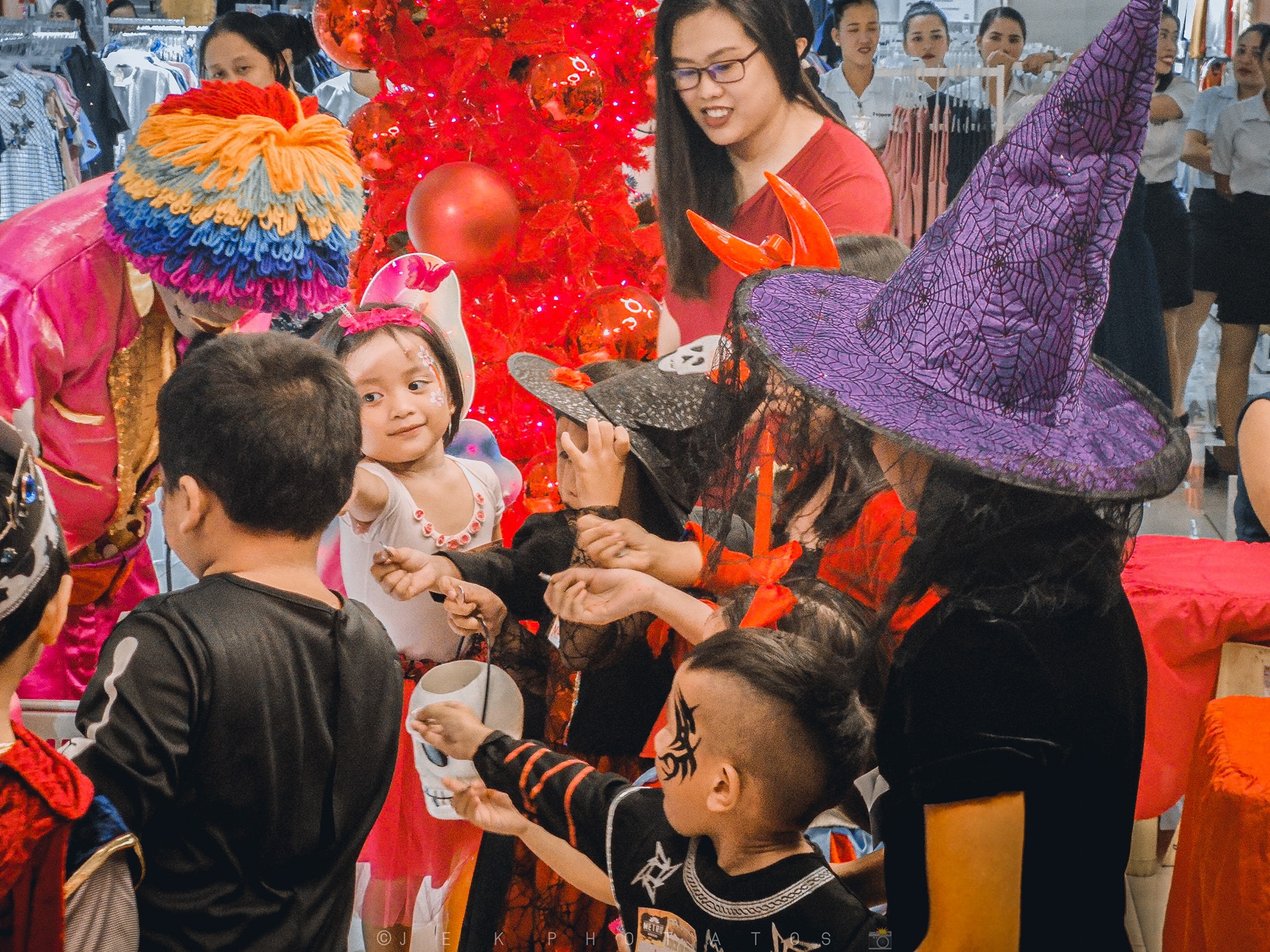
Kids treat-or-treating at a mall in Metro Manila
Image credit: Joaquin Czeslaw
Trick-or-treating is also done in modern communities in the Philippines, although this is not always done on All Hallows’ Eve itself.
Sometimes, these trips are scheduled late in the afternoon. All of the children in a neighborhood go from house to house at the same time in one big group.
Even if trick-or-treating is done in certain communities, only a few homeowners decorate their homes with Halloween decorations as Christmas decorations are usually up in the Philippines as early as the 1st of September.
Some shopping malls also organize trick-or-treat events during the daytime and kids dressed in Halloween costumes get to collect treats from participating stores. Prizes usually await the kids with the most imaginative costumes.
8. Halloween parties

A pre-pandemic Halloween costume party
Image credit: NoKal
To young adults living in the metro, Halloween parties are usually part of the Halloween season agenda.
Before the pandemic, bars and clubs in the hip neighborhoods in Metro Manila, such as Poblacion in Makati, would be busy during the week, hosting raves, costume parties, and pop-culture-themed parties during this time.
For non-partygoers, there would also be other activities that involve little to no partying and drinking. These include marathons of scary movies, horror-themed breakout rooms, and even tours of spooky historical sites.
9. Horror TV shows
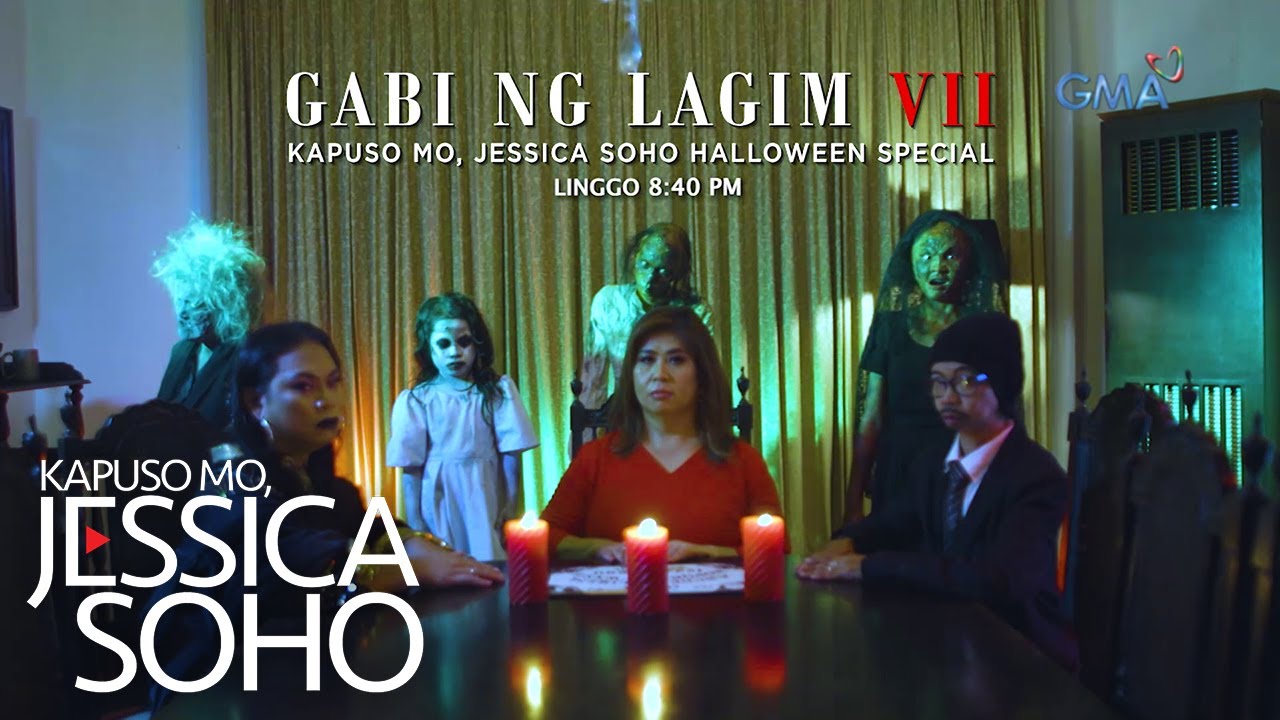
“Gabi ng Lagim“ is the most anticipated Halloween TV special in the Philippines
Image credit: GMA Public Affairs
TV networks in the Philippines play old Filipino horror movies instead of their usual programs during Halloween. Even their regular programs adapt to the theme, so you would often see showbiz personalities in costumes on comedy and variety shows.
However, what many Filipinos look forward to are magazine programs’ Halloween special. One popular show is Kapuso Mo, Jessica Soho’s “Gabi ng Lagim” (Night of Horrors) on the GMA channel.
This special episode usually tackles scary sights in the Philippines as well as hair-raising ghost sightings. For many, it’s become a Halloween tradition to watch this with family members.
Halloween traditions during pandemic times
2021 marks the second year of us missing our Halloween traditions. Since the start of the lockdowns, we haven’t been able to visit our dead at the cemetery with our entire extended families and honor them in our unique, Filipino ways.
Despite this, it’s best for us to avoid going to the cemetery as much as possible and adapt our religious undas practices to our home. For sure, our departed loved ones would understand and would want us to be safe from the virus.
Also check out:
- 7 Filipino Halloween movies to give you chills
- 15 Filipino comics to read for free on Penlab.ink
- 10 traditional Filipino Christmas foods
Cover image adapted from: Las Casas Filipinas de Acuzar, @evelyn712, and @imureijo
